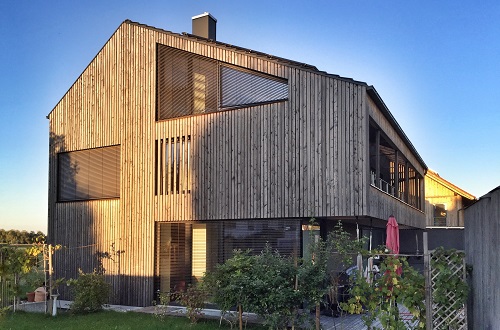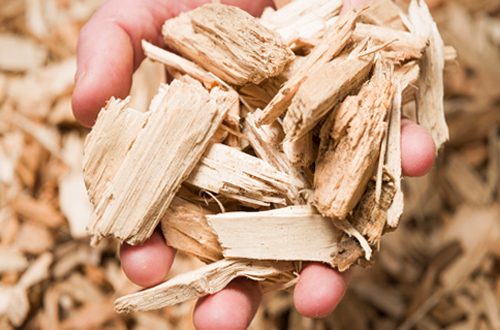Climate change is one of the greatest global challenges facing humanity. The renewable raw material wood can make an important contribution to climate protection. Sustainably managed forests and the use of wood as a building material, for instance, protect the climate because sustainable production and the material and energy use of wood reduce greenhouse gas emissions such as carbon dioxide (CO2). Forests absorb CO2 from the air during photosynthesis, store carbon long-term and release oxygen into the air. In addition, trees have a balancing effect on the temperature of their surroundings and improve the air quality. Trees and soils of the forests in Germany currently bind around 1.23 billion tonnes of carbon. The German forest acts as a CO2 sink to remove 58 million tonnes of CO2 from the atmosphere every year (forest storage).


When wood is used as a building material, the carbon remains bound in the products such as wooden floors, wooden façades and wooden materials (wood product storage). At the same time, the trees growing to replace the harvested timber remove additional CO2 from the atmosphere. In other words, every wood product is also a CO2 sink. Using the wood product for as long as possible prolongs the positive effect. What is more, building and heating with wood can replace finite fossil and energy-intensive raw materials such as coal, natural gas and oil (substitution effect). Construction timber and timber products consume much less energy in production than, for example, cement, aluminium, plastic or steel. The substitution effects of wood use clearly illustrate why the sustainable management of forests and the use of wood as a renewable resource make perfect sense for climate protection considerations alone.

Wood and wood residues can also be recycled several times and processed into new high-quality products. The objective is always to keep the wood in the material chain for as long as possible. The multiple material use of wood (cascade use) before final energy recovery contributes to resource-efficient management and to climate protection.


